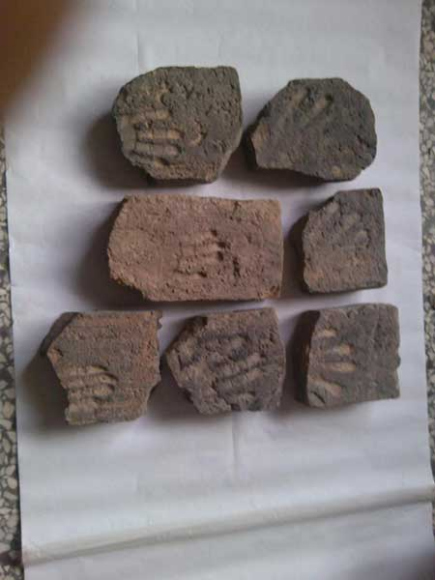
An aerial view of a Sangyuan brick kiln is seen in this photo. (Photo provided to chinadaily.com.cn)
Chinese archaeologists advanced their research on the ruins of the Sangyuan brick kiln site by finding another 48 brick kilns and a number of bricks with their makers' fingerprints.
The Sangyuan brick kiln ruins in Fuping county, Shaanxi province, is considered the largest brick kiln ruins from the Tang Dynasty (618 – 907), with 495 brick kilns discovered since the early 1990s, according to Wang Xiaomeng, deputy director of Shaanxi provincial institute of archaeology and chief of the excavation team on the ruins in 2015.
"We made the new excavation in 2015 on the brick kiln ruins and found 48 brick kilns and a number of bricks with the fingerprints of brick workers," Wang said.
The Tang Dynasty was the strongest and most prosperous in Chinese history. The brick kilns might have been built in the Tang Kaiyuan period, some 1,300 years ago, for the construction of Tang Dingling, the mausoleum of Tang Zhongzong, who wasalso known as Li Xian (656 – 710), Yu Chunlei, assistant researcher of the institute and a member of the excavation team,said.
Tang Zhongzong was the dynasty's fourth emperor.."There were so many brick kilns for the tomb construction because the tomb was required to be completed in a limited time," Yu said.
The historical records show that after Li Xian died accidently, the royal family members fought for throne and Li Xian's burial had to be held after the fifth emperor, Li Dan, ascended the throne.
With the newly discovered brick kilns, archaeologists also unearthed a number of ancient bricks marked with fingerprints, which were commonly considered to be trademarks to distinguish which worker made which bricks.
Yu had his own opinion on the fingerprints, saying that it might be a kind of technology that allowed workers to press the bricks with their hands to make the bricks more solid by forcing the brick material to completely fit the mold.



















































